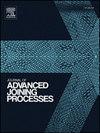Ablation treatment of CFRP via nanosecond pulsed Ytterbium-doped fiber laser: Effects of process parameters on surface morphology and shear strength of adhesive bonded joints
IF 4
Q2 MATERIALS SCIENCE, MULTIDISCIPLINARY
引用次数: 0
Abstract
Adhesive bonding is the joining technique that provides the maximum exploitation of Carbon Fiber Reinforced Polymers (CFRPs) for structural applications. However, it is necessary to attain a high-strength adhesive bond, achieved by removing surface contaminants, such as mold release agents, and simultaneously generating a surface structure suitable to increase the actual contact surface area. The purpose of the research work presented in this paper is to evaluate the effect of process parameters of a nanosecond pulsed laser pre-bonding surface treatment on the ablation of thermoset matrix CFRP substrates. In particular, the link between the volume of ablated material and the tensile shear strength (TSS) of adhesive bonded joints was evaluated by lap-shear tests, profilometer surveys, and Scanning Electron Microscope (SEM) analysis. ANOVA and regression models were used to highlight the influence of laser parameters, with power emerging as the most significant factor, and energy density proving pivotal for joint strength. Line spacing was also significant, while scanning direction had negligible impact. The key outcomes of the study demonstrated that controlled laser ablation plays a critical role in determining joint performance. A negative correlation was found between TSS and the thickness of ablated material, indicating that excessive ablation weakens the bond. Optimal joint strength was achieved with moderate fiber exposure while maintaining matrix integrity, emphasizing the need for precise control over laser parameters. Fracture surface analyses revealed distinct failure mechanisms, ranging from cohesive failure within the adhesive layer to interfacial failure at the fiber-matrix boundary, depending on the ablation conditions. The findings provide clear guidelines for optimizing laser surface treatments to enhance the structural performance of CFRP adhesive joints in practical applications.
纳秒脉冲掺镱光纤激光烧蚀CFRP:工艺参数对粘结接头表面形貌和抗剪强度的影响
粘接是一种最大限度地利用碳纤维增强聚合物(CFRPs)用于结构应用的连接技术。然而,有必要通过去除表面污染物(如脱模剂),同时产生适合增加实际接触表面积的表面结构,来获得高强度的粘合。本文的研究目的是评价纳秒脉冲激光预键合表面处理工艺参数对热固性CFRP基板烧蚀的影响。特别是,烧蚀材料的体积与胶结接头的抗拉剪切强度(TSS)之间的联系通过搭接剪切试验、轮廓仪测量和扫描电子显微镜(SEM)分析进行了评估。利用方差分析和回归模型来突出激光参数的影响,功率是最重要的因素,能量密度是影响关节强度的关键因素。行间距也很重要,而扫描方向的影响可以忽略不计。该研究的主要结果表明,受控激光烧蚀在确定关节性能方面起着关键作用。TSS与烧蚀材料的厚度呈负相关,表明过度烧蚀削弱了键合。在保持基体完整性的同时,通过适度的纤维暴露实现了最佳的接头强度,强调了对激光参数精确控制的必要性。断裂面分析揭示了不同的破坏机制,从粘结层内的内聚破坏到纤维-基体边界的界面破坏,这取决于烧蚀条件。研究结果为在实际应用中优化激光表面处理以提高CFRP粘接接头的结构性能提供了明确的指导。
本文章由计算机程序翻译,如有差异,请以英文原文为准。
求助全文
约1分钟内获得全文
求助全文

 求助内容:
求助内容: 应助结果提醒方式:
应助结果提醒方式:


